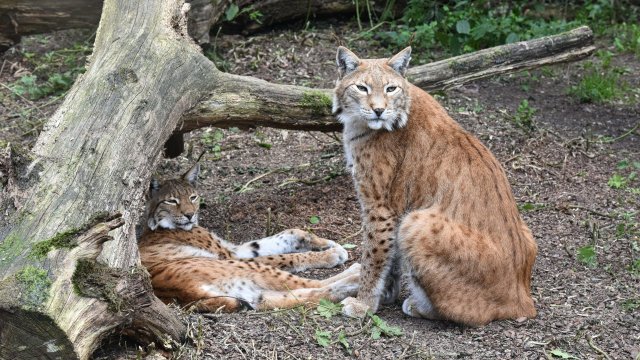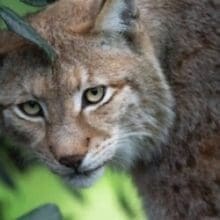5 Fascinating Facts About Bobcats You Probably Didn’t Know
5 Surprising Facts About Bobcats: Unveiling the Untamed Majesty
 Bobcats are elusive and mysterious creatures that roam the wilderness of North America. With their distinctive tufted ears and short tails, these wild cats have captured the imagination of many. While you may think you know a thing or two about bobcats, there are some surprising facts that you probably didn’t know. In this article, we will explore five fascinating facts about bobcats that will leave you in awe of these incredible creatures.
Bobcats are elusive and mysterious creatures that roam the wilderness of North America. With their distinctive tufted ears and short tails, these wild cats have captured the imagination of many. While you may think you know a thing or two about bobcats, there are some surprising facts that you probably didn’t know. In this article, we will explore five fascinating facts about bobcats that will leave you in awe of these incredible creatures.
1. Bobcats are Excellent Hunters
Bobcats are skilled predators and have a remarkable ability to hunt their prey. They are known for their stealth and agility, which allows them to silently stalk their victims. These wild cats have a diverse diet that includes rabbits, squirrels, birds, and even small deer. Their hunting success rate is incredibly high, with studies showing that bobcats catch their prey in about 70% of their attempts.
One interesting hunting technique employed by bobcats is called “still-hunting.” This method involves patiently waiting in a concealed position for unsuspecting prey to come within striking distance. Once the perfect moment arrives, the bobcat pounces with lightning speed, using its powerful hind legs to deliver a fatal blow.
2. Bobcats Have Remarkable Adaptations
Bobcats have evolved several remarkable adaptations that enable them to thrive in diverse environments. One of their most notable adaptations is their keen eyesight and hearing. Their eyes are specially designed to see in low light conditions, allowing them to hunt effectively during dawn and dusk. Additionally, their tufted ears not only give them a distinctive appearance but also enhance their hearing, enabling them to detect the slightest rustle of prey.
Another fascinating adaptation of bobcats is their retractable claws. Like domestic cats, bobcats can retract their claws when they are not in use. This helps keep their claws sharp and prevents them from getting worn down as they traverse various terrains. The retractable claws also allow bobcats to move silently, making them even more effective hunters.
3. Bobcats Have Wide Ranging Territories
Bobcats are solitary animals that require large territories to meet their needs. The size of their territories can vary depending on factors such as food availability and habitat quality. On average, a male bobcat’s territory can span around 25 square miles, while a female’s territory is typically smaller, covering about 5-10 square miles.
These territorial boundaries are marked by scent markings, scratches on trees, and urine sprays. Bobcats are highly territorial and will defend their territories fiercely against intruders. However, they do tolerate overlapping territories with members of the opposite sex, especially during the breeding season.
4. Bobcats are Masters of Camouflage
Bobcats have a remarkable ability to blend into their surroundings, thanks to their excellent camouflage. Their fur coloration and markings help them remain hidden from both their prey and potential predators. The coat of a bobcat is typically a mix of brown, gray, and black, providing them with effective camouflage in various habitats.
Additionally, the bobcat’s spotted pattern helps break up its silhouette, making it difficult for prey to spot them. This camouflage allows bobcats to approach their prey undetected, increasing their chances of a successful hunt. It also helps them avoid larger predators such as coyotes and mountain lions.
5. Bobcats Play an Important Role in Ecosystems
Bobcats play a crucial role in maintaining the balance of ecosystems they inhabit. As top predators, they help control populations of smaller mammals, which in turn affects the vegetation and overall biodiversity of an area. By regulating prey populations, bobcats prevent overgrazing and help maintain healthy ecosystems.
Furthermore, bobcats are indicators of ecosystem health. Their presence or absence can provide valuable insights into the overall well-being of an ecosystem. Monitoring bobcat populations can help scientists assess the impact of habitat loss, climate change, and other environmental factors on the ecosystem’s stability.
Summary
Facts About Bobcats: Facts About Bobcats Bobcats are fascinating creatures with a range of remarkable adaptations and behaviors. From their exceptional hunting skills to their ability to blend into their surroundings, these wild cats have captivated researchers and wildlife enthusiasts alike. Understanding the unique characteristics of bobcats not only deepens our appreciation for these elusive creatures but also highlights the importance of conserving their habitats. By protecting bobcats, we are safeguarding the delicate balance of ecosystems they inhabit and ensuring the survival of these magnificent animals for generations to come.
and behaviors. From their exceptional hunting skills to their ability to blend into their surroundings, these wild cats have captivated researchers and wildlife enthusiasts alike. Understanding the unique characteristics of bobcats not only deepens our appreciation for these elusive creatures but also highlights the importance of conserving their habitats. By protecting bobcats, we are safeguarding the delicate balance of ecosystems they inhabit and ensuring the survival of these magnificent animals for generations to come.
Read More About Bobcats From Wikipedia



